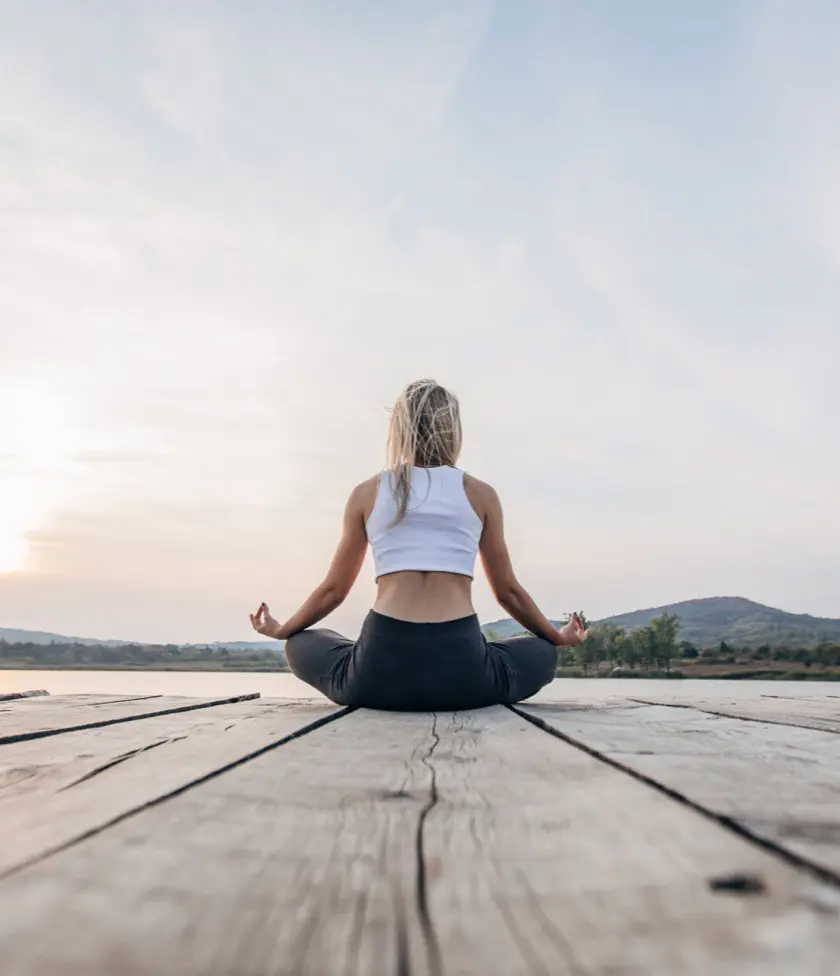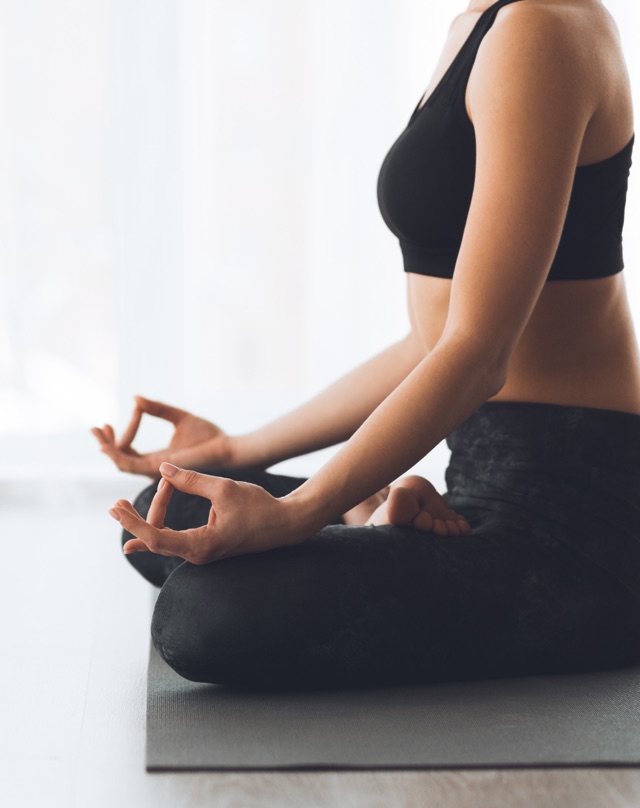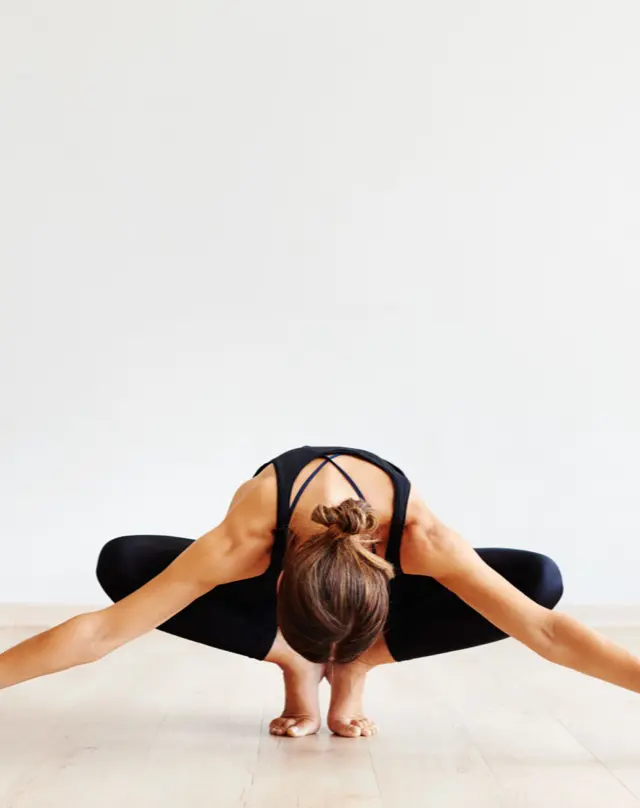10 Things You Need to Know if You’re A Little Iffy About Yoga and Meditation
People ask me all the time about how to get started in a regular yoga or meditation practice and how to stick with it. Maybe they’ve heard about it from a celebrity on TV, perhaps they’ve read my book, or more likely they know someone else whose body and mind has been radically transformed by the practices. They want the benefits, but feel unsure and overwhelmed, and just don’t know where to begin.
Committing to change can be hard, and things that are unfamiliar can be intimidating. When it comes to yoga and meditation, people often have many preconceived notions. With limiting self-beliefs like “I’m not flexible,” or “I’m too Type A to sit still,” they often end up talking themselves out of trying, even when they know the exercise and mindfulness would be for their own good.
If this sounds familiar, relax, take a deep breath, and know that it’s never too late to try something new. Here’s what you need to know if you want to try yoga and meditation, but aren’t sure if you can, how to get started, and how to stay consistent:
You Don’t Have to Shave Your Head
Or anything else weird or uncomfortable. Get rid of preconceived notions about yoga and meditation. This is not a cult. It’s not religious. You don’t have to be a Himalayan monk or a hippie vegan, nor do you have to be a highly trained athlete. Yoga and meditation can be many things to many people. There are a wide variety of styles of each practice, so there’s going to be something that works for everyone. Yoga and meditation are not one size fits all.
Do Your Homework!
The beauty of the world we live in today is that we literally have a wealth of information about every subject at our fingertips 24 hours a day. Take advantage of that! Do the research before you decide which type of practice to explore, which studio to visit, or which workshop to attend. Figure out which teachers’ or studios’ styles most appeal to your needs and personality. You may prefer a more athletic type of yoga, or a group meditation rather than a solitary practice. Everyone’s needs are different. Familiarize yourself with the variety available, so that you know Ashtanga from Yin yoga, and Primordial Sound Meditation from Transcendental. If you feel nervous going to a new studio, learn everything about the place from the business’s website. Then it won’t feel strange and scary when you go in person.
Pick Your Top 3
One great way to set yourself up to win is to identify the top three things that really resonate with you about yoga and meditation. What makes you curious about it? Why do you want to begin a practice? Do you suffer from anxiety? Are you looking for a deeper spiritual connection? Do you want to lose weight? Answering these questions will help you identify which types of yoga and meditation you are most likely to benefit from and be able to stick with.
Start Small
You don’t have to dive into a practice headfirst and start meditating for three hours straight or going to two 75-minute yoga classes per day the first week. That’s not how it works, and that kind of behavior actually goes against everything that yoga and meditation stands for. These disciplines help us learn balance and consistency. Gradually work up to more advanced levels at your unique pace. Go slowly. No one starts learning piano by playing Mozart. At some point we all learned to ride a bike using training wheels. Begin with a simple five minute meditation in the morning and add on from there. Start with gentler, one hour yoga classes until you build up your stamina and confidence. We stick with things that don’t make us suffer.
Find an Accountability Partner
Find a friend to share the experience and hold you accountable. Agree to meet up for a yoga class together. Ask your friend to remind you to meditate. Instead of a night out, change it up and go as a pair to a meditation workshop. One fun thing is to do a challenge together, and at the end give yourselves a reward like a nice dinner or pretty new shoes.
Go in With No Expectations or Judgment
Going to yoga or trying to meditate only a couple of times and quickly writing it off is a huge mistake. Keep trying. Most peoples’ reason for giving up so quickly is that they simply didn’t find the right fit. If you didn’t like mantra meditation, a guided meditation might be more your style. I have a friend who prefers a moving meditation, where she takes quiet walks by herself twice a day. Maybe the hot Vinyasa class you tried was too much like aerobics, and you’d enjoy a non-heated, and less rigorous class more. Go in without expectations and see what happens. Negative thoughts won’t serve you, and neither will judgments of yourself, others, practices, or styles of yoga or meditation. Give new experiences a few chances and look at them objectively. Yoga and meditation aren’t always “love at first sight” for most of us.
Personalize Your Practice
No two individuals’ meditation or yoga practices look alike, and they shouldn’t. What many beginners don’t realize, though, is that it’s okay to personalize. Modify poses, give yourself as many rests as you need in yoga. Change your meditation style to fit your mood if you want to. Give yourself permission to make whatever you choose to do your own.
There are No Quick Fixes
It’s unrealistic to expect sudden miracle cures. Going to yoga or meditating once won’t have any dramatic effect. That’s because there are no magic bullets. Healing happens over time with lots of repetition, and at first the changes might be subtle as you adjust, clearing out your mind and opening energy channels. Keep those expectations in check and you won’t be disappointed when you don’t achieve immediate enlightenment or instantaneous healing. Those things don’t exist anyway. Remember, it takes at least 21 days to create a new habit. Some say it’s even longer than that. Give it time.
Keep it Simple, and Comfortable
Positive change doesn’t have to be radical to be life-altering. In fact, keeping it simple and easy is a better predictor or success than doing something drastic like jetting off to Bali for a month long yoga teacher training a few days after your first class. Let your changes be incremental; go easy on yourself. No one needs to overhaul their life overnight. As you gradually add on to your yoga and meditation practices, check in regularly, and be sure you’re comfortable.
Communicate With Yourself
Ask yourself this question each day: Why are you choosing to be here in this meditation or yoga practice? Why did you choose to make this change? Your answer will reveal your motivating factor, and without a driving spark, it’s all too easy to lose momentum. Are you recovering from illness or trauma? Do you want to serve as a role model? Are you seeking bliss amid a storm of chaos? Whatever it is, visualize your source of inspiration and it will guide you to stay on track.
Remember, the benefits of yoga and meditation are cumulative — they build up over time, so it’s important to stay consistent. If you have patience with yourself, and the process, keep it simple, and let go of expectations, sticking to a new habit will come naturally.



